360-Degree Feedback - A Complete Guide [+ Survey Template]

Picture this: one of the team leaders reporting to you is a proper rockstar. Their performance is excellent: they don’t just hit all the targets, they exceed them.
But what if they achieve it through bullying or pushing their team to the breaking point?
If you pay attention only to their ability to deliver on KPIs, you may not even know this. Worse yet, even the team leader might not realize they’re doing something wrong.
That’s where 360-degree feedback can help.
In the article, you will learn what 360° feedback is and how it differs from performance reviews. We also look at its benefits and limitations, example questions you might want to ask in the surveys, and best practices for conducting them.
What is 360-degree feedback?
360-degree feedback evaluates the employee’s performance using a variety of sources. Like their peers, direct reports, managers, or even customers. It can also include self-evaluation. Which is why it’s sometimes described as multi-source or multi-rater feedback.
The aim?
To provide a comprehensive picture of employee strengths and areas for improvement.
360-degree feedback vs. performance review
Both 360-degree feedback and performance reviews aim to evaluate one’s performance. However, the two processes serve different purposes.
The main objective of 360-degree feedback is to facilitate continuous development, while the performance review process aims to evaluate past achievements and set future goals.
This means performance reviews may impact one’s compensation or promotions, whereas 360° feedback doesn’t.
There are also differences in how you conduct the two:
- 360° feedback comes from multiple (anonymous) sources.
- Performance reviews may also be based on various data sources, but the line manager takes responsibility for collating, filtering, analyzing, and delivering the feedback.
Let’s break down 360-degree feedback:
- Multiple sources (peers, direct reports, supervisors, external stakeholders + potentially self-evaluation)
- Development and continuous improvement
- Feedback can be anonymous and is often qualitative
- Not directly tied to compensation or promotions
- Provides a holistic view of performance, fostering personal and professional growth
Here’s how performance reviews differ:
- Single source (typically the direct manager)
- Evaluating past performance and setting future goals
- Usually non-anonymous and often quantitative
- Directly influences compensation, promotions, and other HR decisions
- Assesses past performance for decisions related to rewards and growth
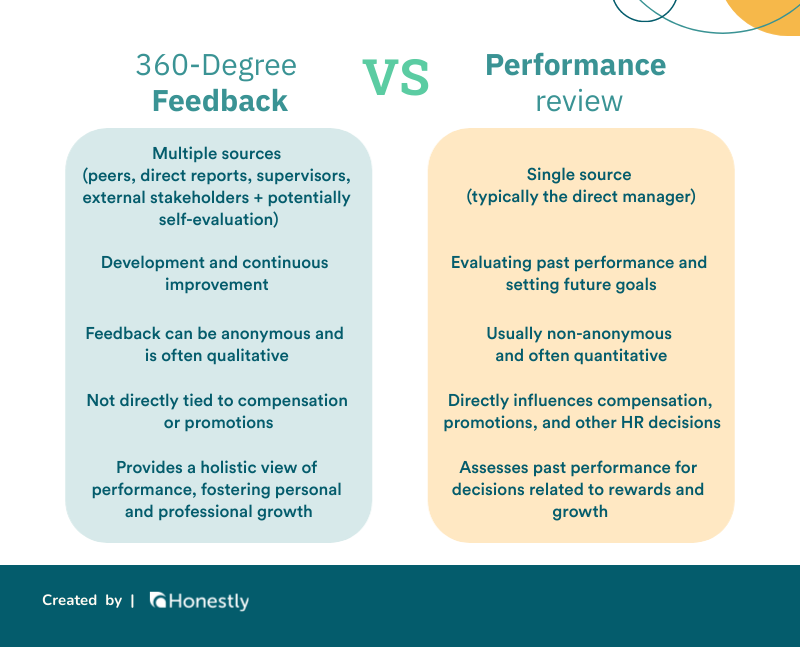
Benefits of 360-degree feedback. And its downsides.
A line manager may have a good idea of employee performance metrics and how they interact with them. But that’s just one perspective.
And let’s be honest: if they like the employee, it may skew the feedback they receive.
By gathering diverse perspectives, 360-degree feedback offers a more complete view of performance. Colleagues, reports, or clients may see things the manager doesn’t.
As a result, this kind of feedback can highlight development needs and reinforce behaviors that contribute to organizational success that may otherwise go unnoticed.
Moreover, it doesn’t rely on one person’s personal views, making the process more objective. And the findings are much more difficult to dismiss if they come from multiple stakeholders.
At least in theory.
In practice, personal biases can still sneak into the quantitative results. If 6 people respond to a survey, one person’s answers can skew the outcome.
In extreme situations, such feedback can be used as a vehicle for office politics or personal vendettas.

There’s more:
One frequently cited benefit of 360° feedback is that it encourages open communication and collaboration within teams.
True, but it requires a mature culture in which these behaviors are already well-embedded.
If not, people won’t give honest feedback to avoid jeopardizing their relationships with colleagues. When used for performance management or managed poorly, 360° feedback can harm the team dynamics and lead to conflicts.

Let’s keep going
By involving employees in the feedback process, you increase employee engagement and commitment. Make them feel valued and empowered.
Unless they see it only as a box-ticking exercise that brings no tangible benefits. Moreover, too many feedback requests can be a burden and affect the employee’s willingness to provide honest and valuable insights.
Which takes us to the final point:
Implementing a 360-degree feedback system can be resource-intensive. It requires extensive planning and coordination of multiple stakeholders. There’s also lots more data to collect and analyze.
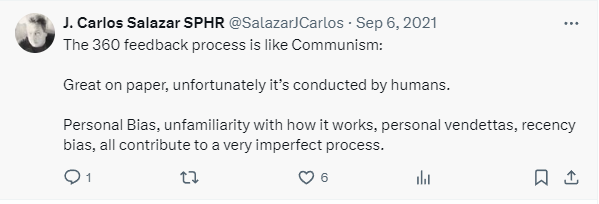
Overall, the effectiveness of 360° feedback depends a lot on implementation.
Benefits of 360-degree feedback:
- Offers a more complete picture by including multiple viewpoints, reducing individual biases.
- Highlights specific areas for growth, helping employees focus on their development needs.
- Helps identify and reinforce behaviors that contribute to organizational success.
- Encourages open communication and collaboration within teams.
- Involves employees in the feedback process, increasing their engagement and commitment.
Drawbacks of 360-degree feedback:
- Despite anonymity, personal biases may still influence feedback.
- If not managed properly, feedback can lead to negative feelings or conflicts.
- The effectiveness of 360-degree feedback can vary across different organizational cultures.
- Implementing a 360-degree feedback system can be resource-intensive.
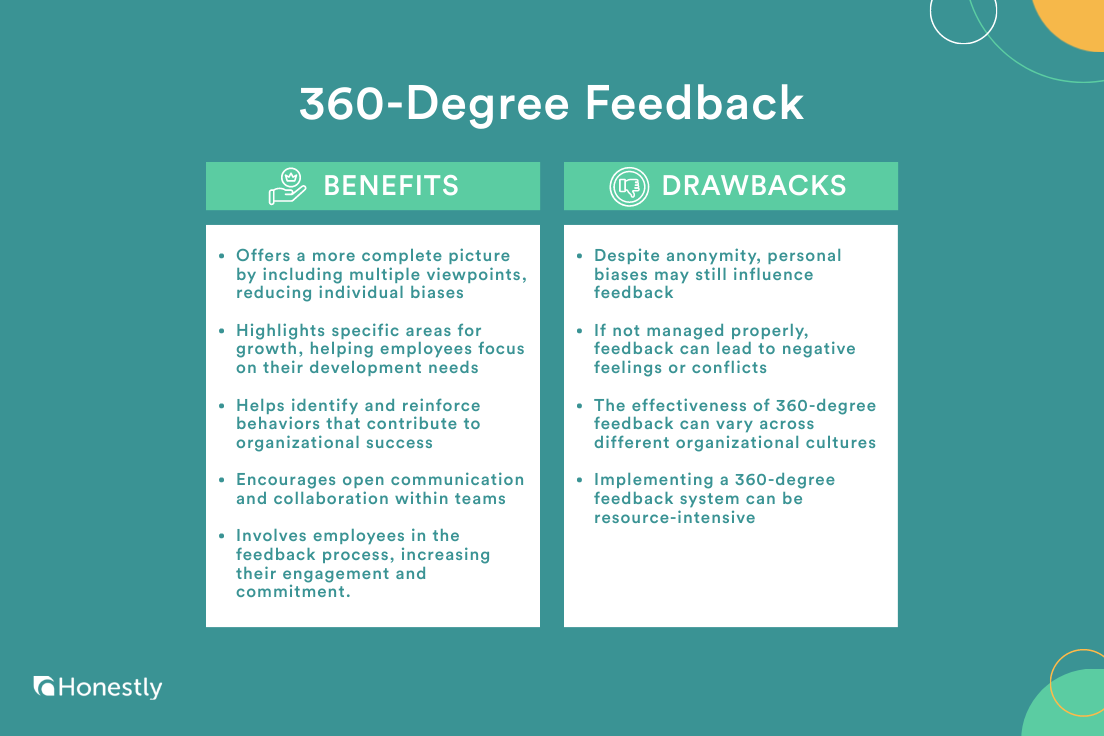
360-degree feedback best practices
As you can see, 360° feedback comes with serious pitfalls. Here are a few best practices to help you avoid them and get the most out of the process.
Ask open-ended questions
I get it: open-ended survey questions require more time and effort to answer. And to analyze.
But they’re vital if you want the exercise to inform professional growth. Quantitative responses don’t tell the whole story. And they kill conversations.
Look at this question:
“This employee takes responsibility for their actions.”
Without examples or context, the responses to the question don’t offer much value.
So allow the respondents to provide extra information in the follow-up questions. Just don’t make them mandatory, as this could decrease the response rates.

(By the way, open-ended responses don’t need to be a pain to analyze with AI-powered feedback tools, like Honestly’s AI assistant).
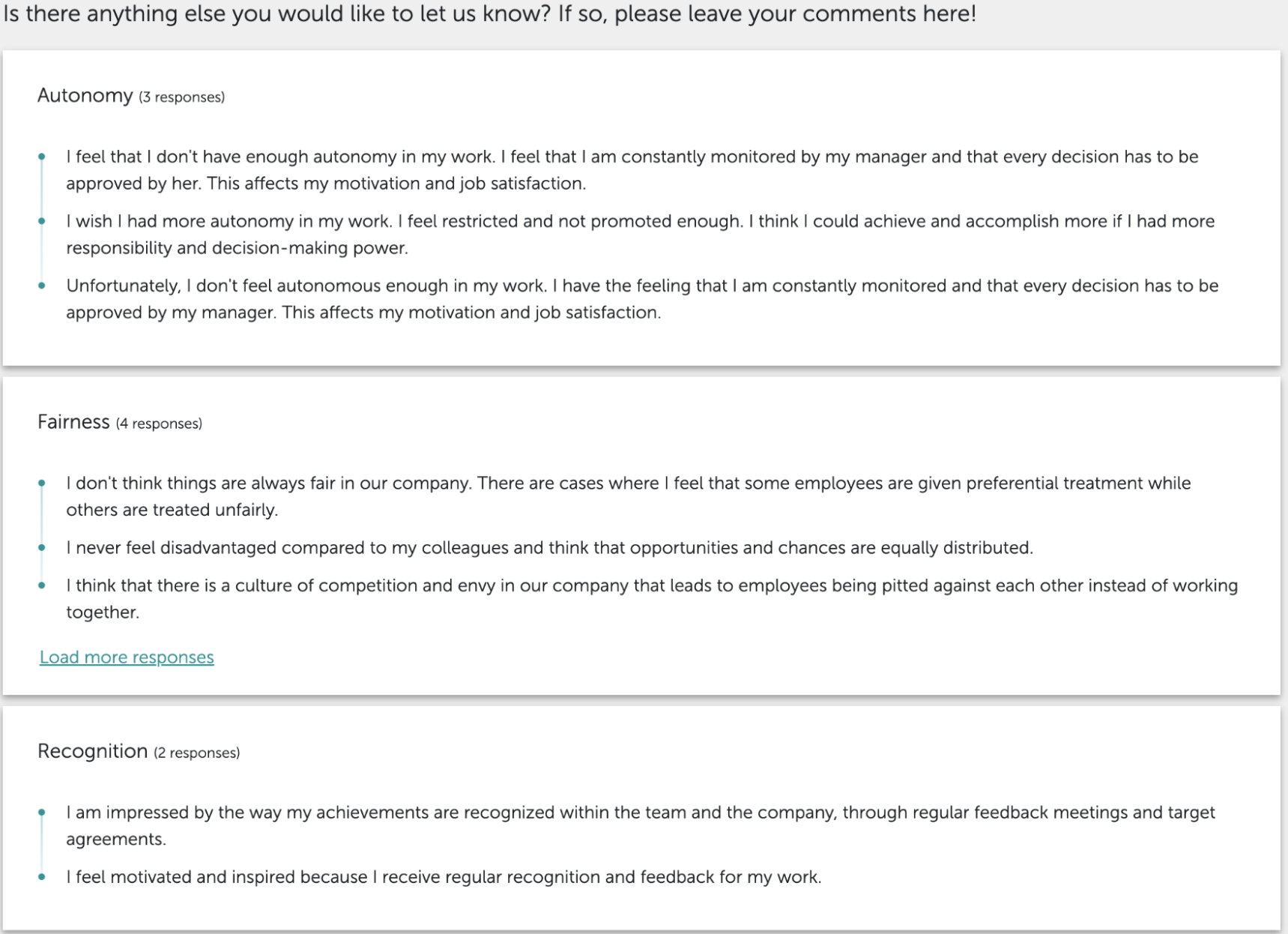
Involve the right people
The people you invite to provide feedback need to know the recipient well enough to offer valuable insights.
So pick the colleagues who have worked with the employee for at least 6 months. Make sure to include a mix of peers, direct reports, the line manager, and customers or suppliers, if relevant.
How many of them?
Ideally, you want 6-10 responses for the feedback to be meaningful.
Keep the surveys short
If you want to get 5-10 responses per candidate and implement 360-degree employee feedback across the entire organization, that’s a lot of surveys to respond to. Especially for middle managers.
Make sure the survey doesn’t take longer than 10-12 minutes, which roughly translates into 10-12 questions.
Moreover, consider the timing of the surveys.
Spread them around the year to prevent build-ups and avoid busy periods, like the end of the quarter or year.

Ensure anonymity and security
The effectiveness of 360° feedback depends on respondents’ honesty and openness.
How willing would you be to give brutally honest feedback if the recipient knew it was coming from you?
Not likely. That’s why make sure the responses are anonymous.
And that the data is secure. You’re handling very sensitive information; the last thing you want is a leak.
Using an external survey provider like Honestly will help you reduce the risk considerably.

Provide training
360° feedback isn’t only about candor but also about care.
Not all employees have the skills to provide constructive and respectful feedback while being honest, so train them beforehand.
The training should also cover interpreting the feedback they receive. And for line managers and supervisors - how to coach and support their staff.
Offer post-feedback support
Talking of support:
Receiving negative feedback can be soul-destroying even for the most thick-skinned of us, especially if you have to deal with it alone.
So, always deliver the feedback in person. Use it as a springboard for a conversation about development goals and offer the support they need to achieve them. Like training or coaching.

360-degree feedback questionnaire template
If you’re considering implementing 360-degree feedback in your organization, we’ve got a treat for you:
A 360-degree feedback survey template with 20 questions on different aspects of employee performance crafted by HR experts.
Here are the top 10 of them
1. This employee recognizes and acknowledges good work from team members.
By asking this question, you can assess how good the employee is at recognizing the contributions of other team members.
💡Why it matters: Peer-to-peer recognition is 35.7% more likely to positively impact performance than manager recognition. It’s linked to such benefits as higher engagement and motivation, improved collaboration and relationships between colleagues, and lower turnover.
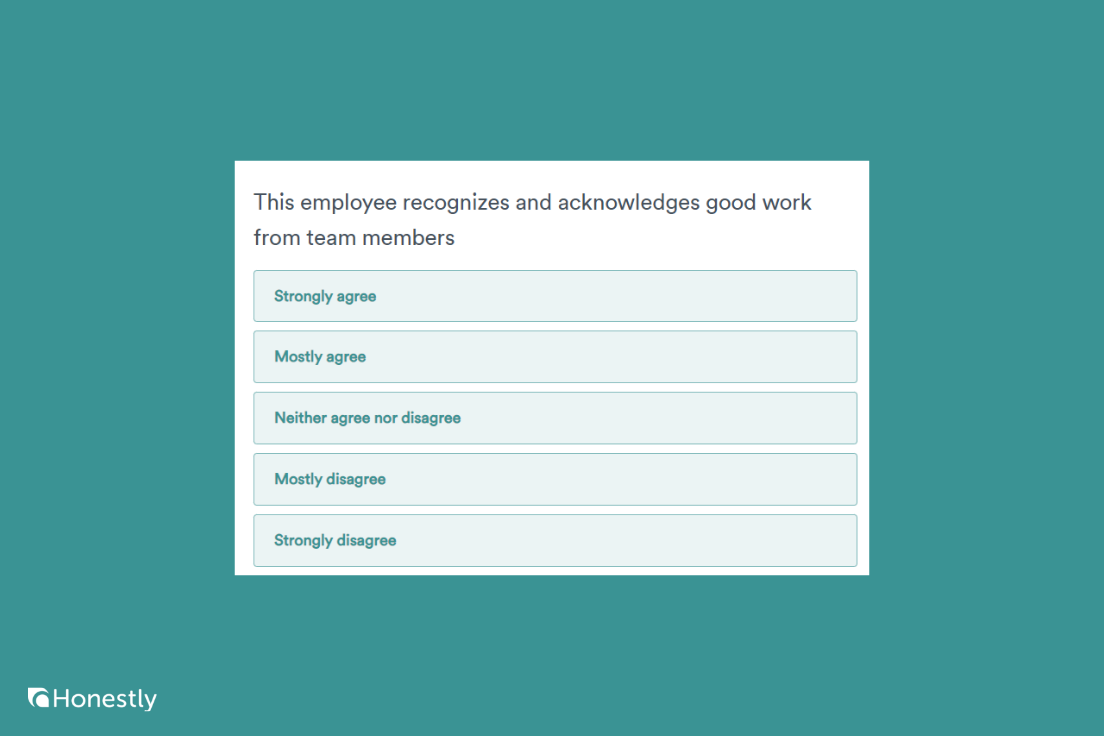
2. This employee treats team members with respect.
This question gives feedback on the employee’s interpersonal skills.
💡Why it matters: Respect is among the top 3 things employees seek when looking for new opportunities. Mistreated colleagues often put in less effort and are more likely to leave the organization.
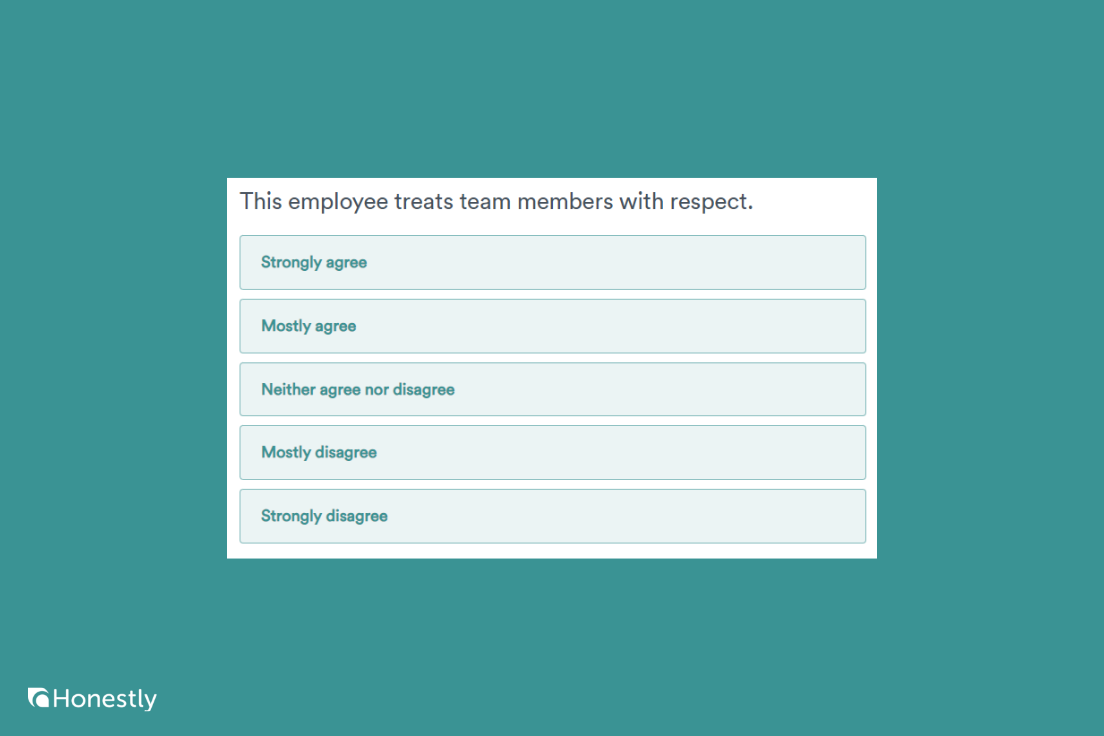
3. This employee communicates clearly and effectively.
The question evaluates the employee’s communication skills.
💡Why it matters: Poor communication has a detrimental impact on productivity. SIS has found that a business with 100 employees wastes $525K yearly on miscommunication. That’s why 70% of employers find communication the most critical skill in potential candidates.
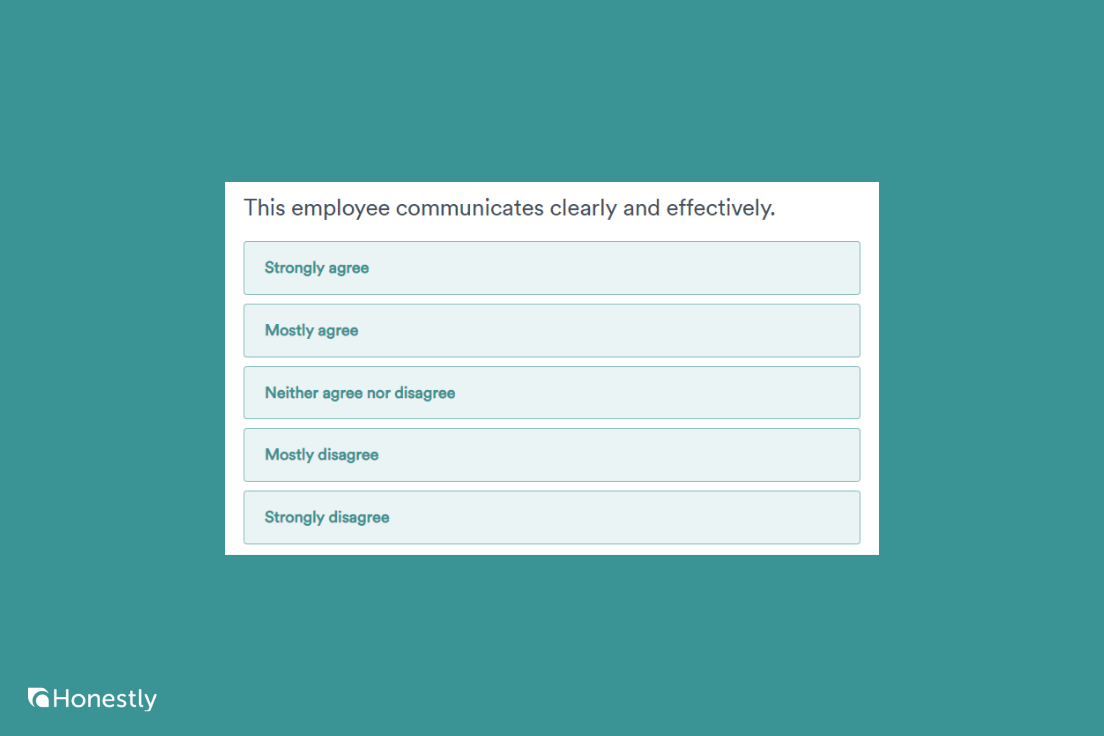
4. This employee can quickly identify solutions to problems.
This question offers insights into the employee’s problem-solving skills.
💡Why it matters: Identifying and evaluating solutions to complex problems is another employee superpower. According to the NACE Job Outlook 2024 report, 88.7% of companies look for evidence of problem-solving skills in potential employees’ CVs. Good problem-solvers are more productive, creative, and adaptable.
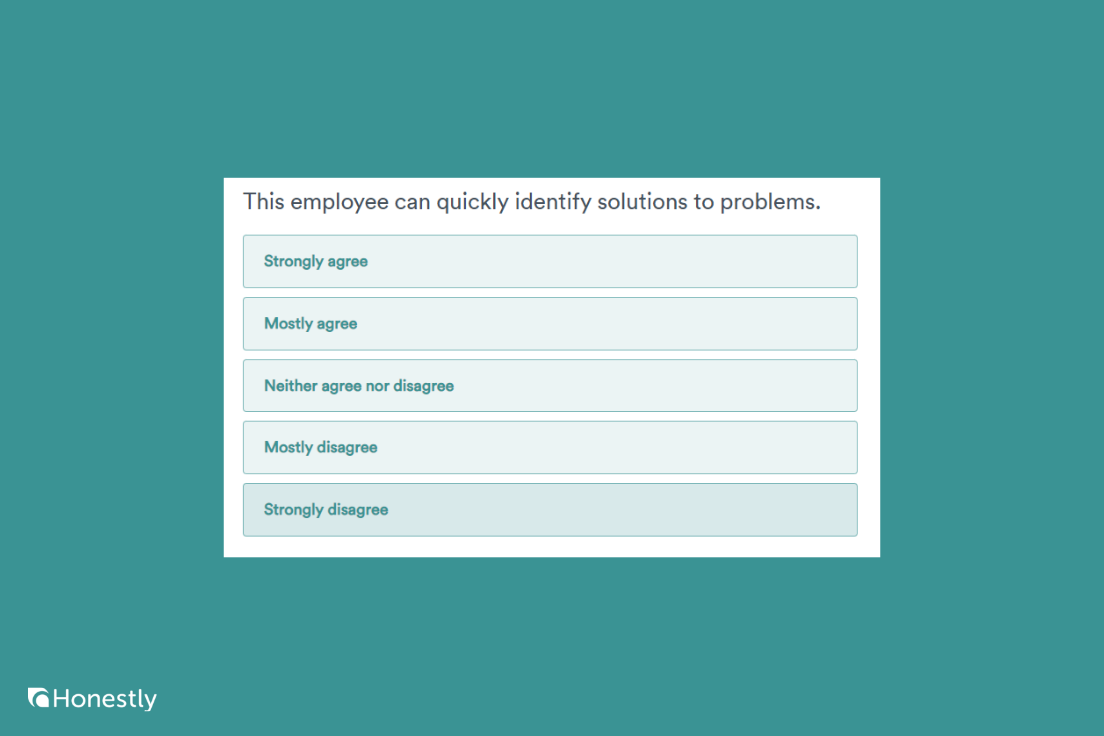
5. This employee can self-manage efficiently to meet deadlines.
By asking this question, you evaluate the employees’ time-management skills and self-discipline.
💡 Why it matters: Employees who can manage their schedules to deliver on time increase team effectiveness. Even slight delays have a domino effect on the whole project, and chasing them adds to operational costs.
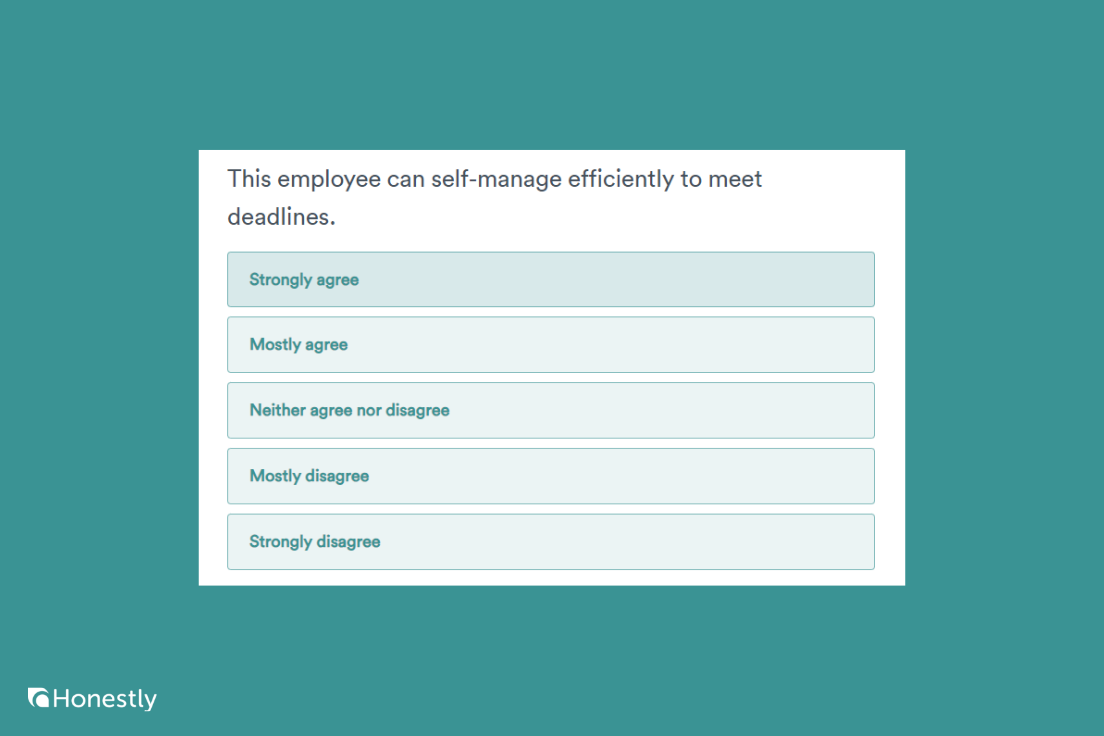
6. This employee is reliable.
The question allows you to evaluate the employee’s reliability.
💡Why it matters: Just like time management and self-discipline, dependability contributes significantly to team success. Employees who can’t follow through on their commitments cause disruption and make day-to-day planning a nightmare.
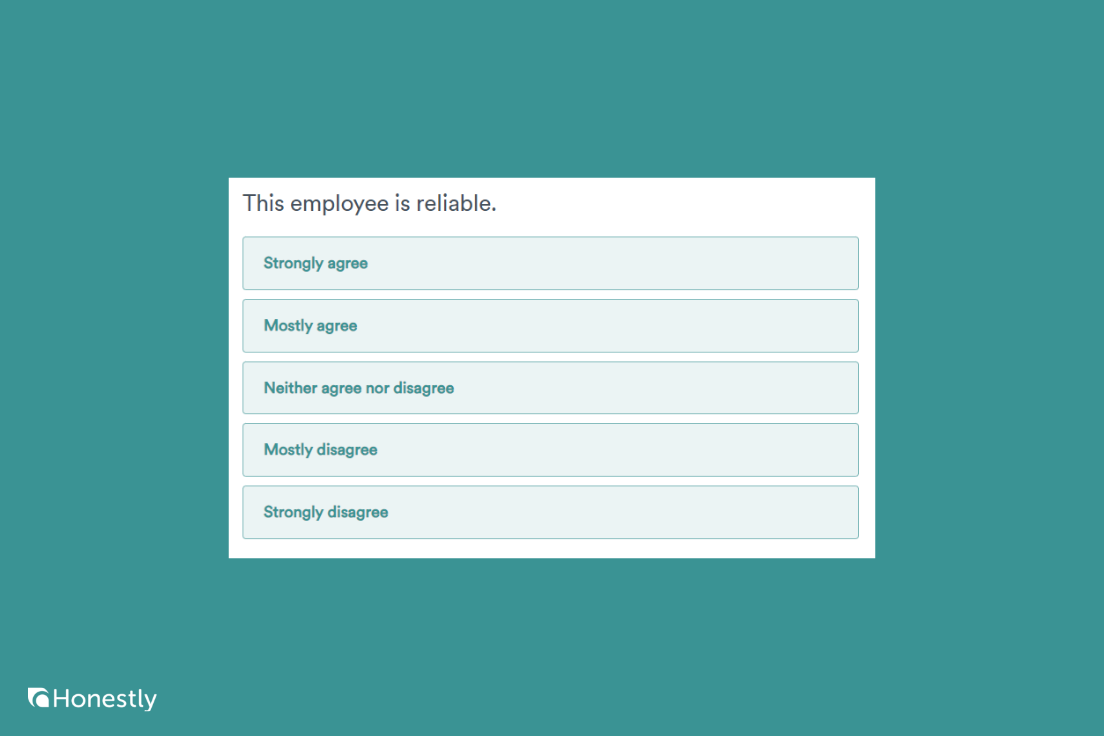
7. This employee can admit mistakes they made.
The question assesses the employee’s accountability and humility.
💡Why it matters: The ability and readiness to admit one’s mistakes is the foundation of professional development. Without acknowledging you’ve messed up and reflecting on errors, it’s difficult to improve and avoid making the same mistakes. Which isn’t great for team productivity and morale.
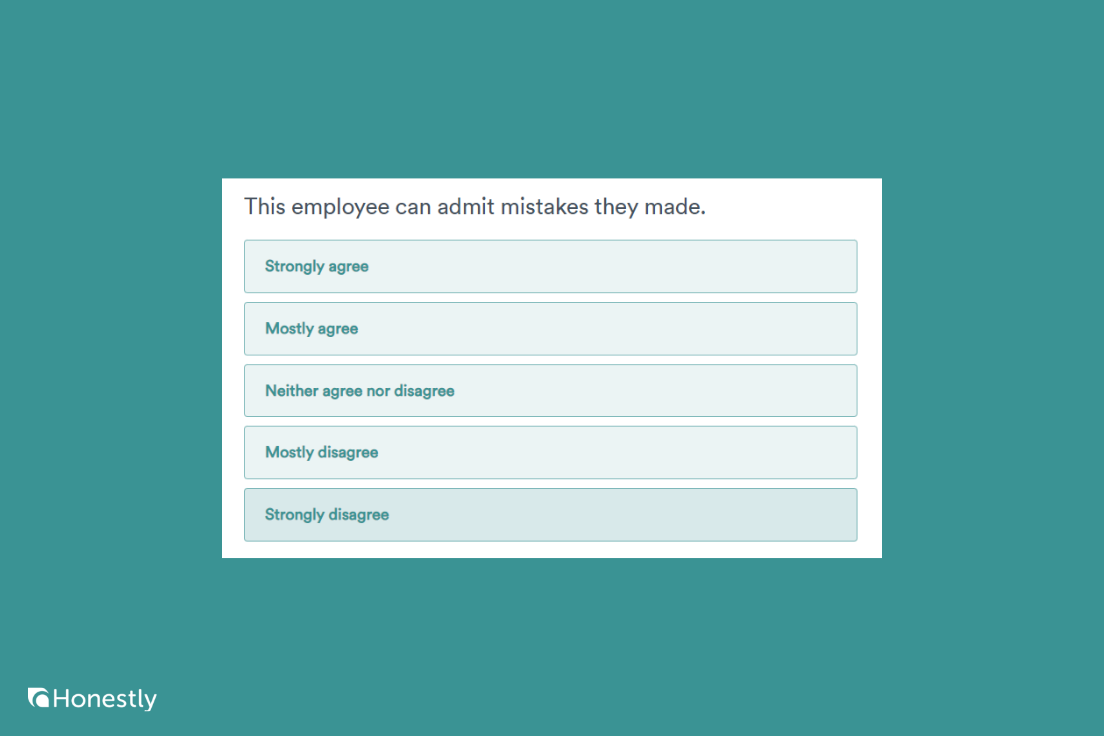
8. How open is this employee toward new ideas?
By asking the question, you evaluate the employees’ openness to innovation and adaptability.
💡Why it matters: Employees who are open to new ideas are better at exploiting arising opportunities. Which is essential to maintain a competitive edge. They’re also easier to manage, especially when the organization is undergoing a period of organizational change.

9. What do you like most/least about working with this employee?
These open-ended questions allow the respondents to comment on the employees’ strengths or weaknesses from a personal perspective.
💡Why it matters: Highlighting the positive aspects of one’s performance can give them a motivational boost. It also helps their employer identify valuable employee skills and qualities they can put to good use. Negative comments can help you pinpoint the areas for improvement.
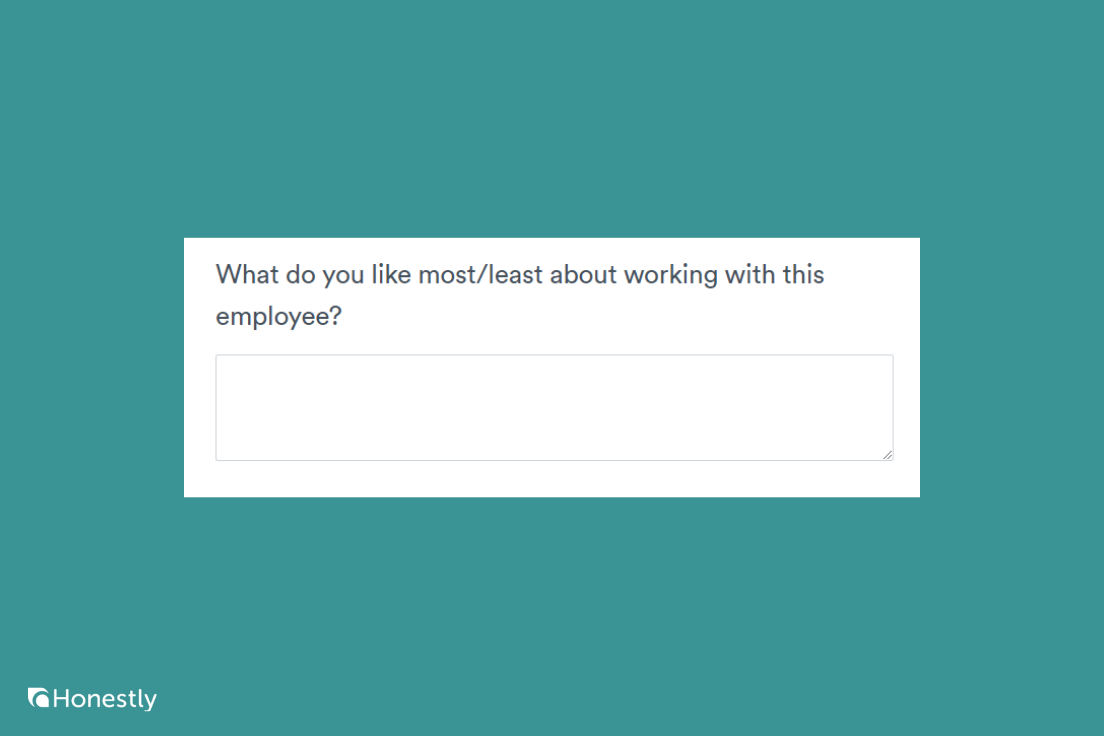
10. How likely would you hire this employee if you were to build your own company?
The NPS-style question helps you understand the employee’s perceived value and potential.
💡Why it matters: Being ready to employ a person in your own company is the best testimony to their value and contribution to the organization.
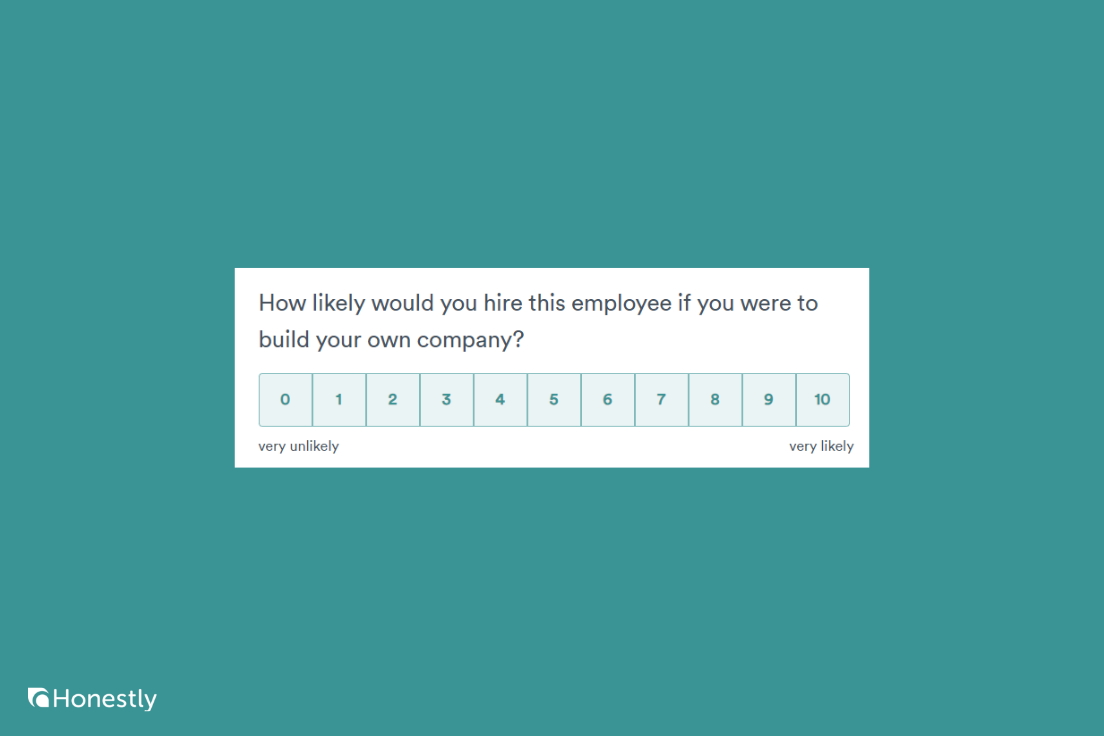
360-degree feedback FAQ
Let’s wrap up with a bunch of frequently asked questions.
How to conduct 360° feedback?
To conduct 360° feedback, gather input from multiple sources, including peers, direct reports, and supervisors, using anonymous surveys. Compile and analyze the feedback, then discuss the results with the employee to create actionable employee development plans.
Is 360° feedback effective?
If managed well, 360° feedback can provide a comprehensive view of an employee’s performance and highlight their strengths and weaknesses. For ongoing personal and professional growth.
How to give your boss feedback?
When giving your boss feedback, focus on specific behaviors and outcomes. Use a respectful and constructive tone, and provide examples. Of course, this should also be the case with the other feedback you’re giving.
Dr Kyle Elliot, a career coach, also recommends balancing positive and negative feedback, giving feedback as soon as possible but not when you’re feeling triggered, and being direct. And forget about the s**t sandwich!
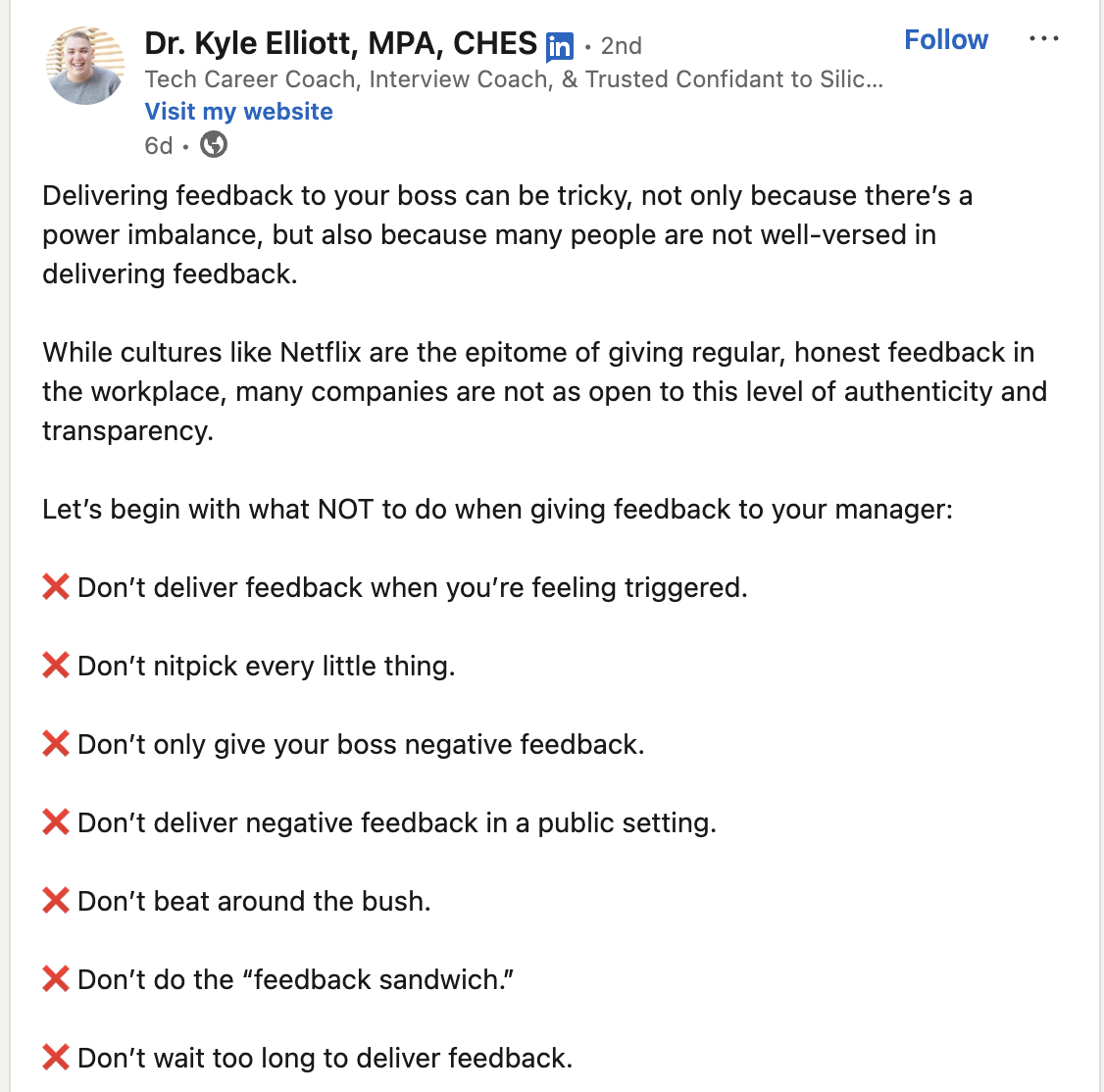
Final thoughts
By tapping into multiple perspectives, 360-degree feedback can offer a wide range of insights that a single person may struggle to identify.
However, if not managed skillfully, it can be an extension of office politics and exacerbate team tensions.
Gathering and analyzing feedback from multiple stakeholders while ensuring confidentiality and anonymity can also be logistically challenging.
Don’t let this discourage you, though. Dedicated feedback tools like Honestly can help you streamline the process and avoid some of the pitfalls. Book a demo to find out more!


